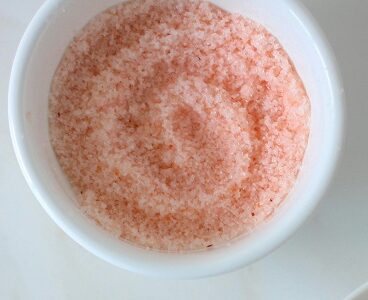The Environmental Impact of Pink Salt Mining: What You Need to Know
Pink salt, also known as Himalayan salt, is celebrated for its unique flavor and supposed health benefits. However, its mining process has raised environmental concerns that consumers should be aware of. This guide explores the environmental impact of pink salt mining and addresses some common questions.
Are pink salt and sendha namak the same?
No, pink salt and sendha namak are not the same. Sendha namak, or rock salt, is used primarily during fasting in Indian culture. Pink salt, on the other hand, is sourced from the Khewra Salt Mine in Pakistan and is known for its distinct pink hue due to trace minerals.
Environmental Concerns of Pink Salt Mining
- Resource Depletion
- Resource Depletion
Mining pink salt involves extracting large quantities of salt from the earth, which can lead to resource depletion. While the Khewra Salt Mine has vast reserves, continuous mining without sustainable practices can eventually deplete these natural resources.
- Habitat Disruption
The mining process can disrupt local ecosystems and wildlife habitats. Heavy machinery and excavation can lead to soil erosion, deforestation, and the displacement of native species. This environmental disruption can have long-lasting effects on biodiversity.
- Water Pollution
Mining operations can result in water pollution if not managed properly. Contaminants from mining activities can seep into local water sources, affecting both human and animal populations. Ensuring proper waste management and treatment practices is crucial to mitigate this impact.
Can pink salt cause high blood pressure?
Pink salt, when consumed in moderation, does not cause high blood pressure. It is important to use any salt, including pink salt, within recommended dietary limits.
Sustainable Mining Practices
To minimize the environmental impact of pink salt mining, several measures can be implemented:
- Eco-Friendly Mining Techniques
Adopting eco-friendly mining techniques, such as reducing the use of heavy machinery and employing manual labor, can help minimize habitat disruption and reduce carbon emissions.
- Rehabilitation of Mined Areas
Rehabilitating mined areas by planting trees and restoring native vegetation can help mitigate the environmental impact. This practice helps restore the natural habitat and promotes biodiversity.
- Water Management
Implementing proper water management practices, such as treating wastewater and preventing runoff, can help protect local water sources from contamination.
Can pink salt expire?
No, pink salt does not expire. As a natural mineral, it remains stable over time. However, it is best stored in a cool, dry place to maintain its quality.
Can pink salt increase testosterone?
There is no scientific evidence to support the claim that pink salt can increase testosterone levels.
Can pink salt be used for cooking?
Yes, pink salt can be used for cooking and seasoning, just like regular table salt. Its unique flavor enhances a variety of dishes.
Are pink salt lamps good for you?
Pink salt lamps are believed to improve air quality and provide a calming ambiance. However, scientific evidence supporting these claims is limited.
What is the healthiest salt to eat?
Pink salt is often considered one of the healthiest salts to eat due to its mineral content and lack of additives. However, moderation is key with any salt.
Conclusion
While pink salt offers several culinary and health benefits, it is important to consider the environmental impact of its mining. By promoting sustainable mining practices and being mindful of resource consumption, we can enjoy the benefits of pink salt while minimizing its ecological footprint. Understanding these impacts can help consumers make more informed choices and support environmentally responsible practices.
